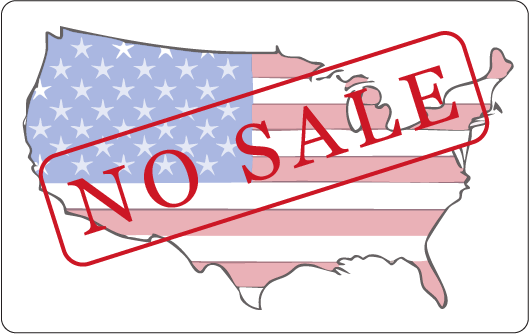Navigating Tariff Turmoil 2025: How Companies are Keeping Prices Competitive (and What it Means for You)

Introduction:
In today's globalized economy, tariffs can significantly disrupt supply chains and inflate consumer prices. Companies are constantly seeking innovative strategies to mitigate these impacts, and understanding these strategies is crucial for both businesses and consumers.
Consider a sudden event where a 25% tariff is imposed on a product by a country. The wholesaler importer works on a 50% gross margin to turn a small profit. This new tariff creates a huge profit squeeze for a wholesaler working on a 50% margin which provokes a sudden price hike to their reseller buyers to avoid loss of needed profit to function. The reseller buyer may decide the new cost structure pushes their required retail price too high for the end user to consider and the reseller simply opts to not replace the product as it's depleted. Leaving the consumer with less and less options over time.
A few common questions to answer before discovering a couple of options:
Q. Who pays the tariff? A. Tariffs are paid by the importer.
Q. Does anyone in the sending country pay any part of a domestic tariff anywhere in the world? A. No.
Q. Who is the importer? A. Usually, the person who receives the product for sale or use in that country.
Q. Does the country where a product is manufactured pay tariffs set by the receiving country? A. Absolutely not. Foreign governments do not send money to pay for tariffs.
Q. Do tariffs take money directly out of American business importers pockets? A. Yes. Absolutely.
Let's explore some common tactics and their implications that companies use to circumvent tariffs or avoid them altogether.
Strategies for Tariff Avoidance/Mitigation:
- Direct Shipping from Non-US Manufacturing:
- Description: Companies ship products directly from their manufacturing facilities in countries outside the US to the end consumer in the destination country, bypassing US ports and associated tariffs. Duties and tariffs may still be due in the receiving country at standard schedule rates.
- Pros (Seller):
- Reduced tariff burden. Some countries may have free or preferred trade agreements on specific products which may be best sent directly from the source.
- Potentially faster delivery times to international customers.
- Tends to put the burden of handling the import process on the recipient.
- Cons (Seller):
- Increased logistical complexity.
- Challenges with customer returns and support.
- Pros (Buyer):
- Potentially lower prices.
- Potentially shorter lead times
- Potentially faster international shipment transit times.
- Cons (Buyer):
- Increased difficulty with returns.
- Likely must handle import process into their receiving country.
- Utilizing Third-Party Logistics (3PL) in Destination Countries:
- Description: Companies establish inventory hubs in destination countries by partnering with 3PL providers. This allows them to store and distribute products locally on the seller’s behalf.
- Pros (Seller):
- Faster delivery times to local customers.
- Improved customer service through local support.
- Standard tariff impact on individual customer orders.
- Cons (Seller):
- Strategic upfront investment in inventory and warehousing.
- Increased inventory management complexity.
- Potential increased overhead costs.
- Handling the import process in the receiving country.
- Pros (Buyer):
- Faster delivery times.
- Easier return process.
- Taxes and duties paid by the importer.
- Cons (Buyer):
- Seller prices calculated to cover 3PL costs.
- Product Removal from the US Market:
- Description: Companies choose to discontinue selling certain products in the US market altogether due to prohibitive tariff costs.
- Pros (Seller):
- Elimination of tariff burden on those specific products.
- Allows the company to focus on more profitable markets.
- Expansion into new markets.
- Cons (Seller):
- Loss of US market share.
- Possible damage to brand reputation in the US.
- Loss of revenue.
- Pros (Buyer):
- None.
- Cons (Buyer):
- Reduced product availability and selection.
- Potential for inflated prices on remaining US-made alternatives.
- Less competition.
Impact on US Consumers:
The decision by some companies to completely withdraw products from the US market has a direct negative impact on consumers. This results in:
- Reduced Choice: Fewer product options limit consumer purchasing power.
- Inflated Prices: Products that are still available, particularly those produced domestically, may see price increases due to reduced competition and higher US manufacturing costs.
- Limited Access: Consumers may lose access to specialized or niche products that are primarily manufactured overseas.
Considerations for Small Businesses:
Small businesses must carefully weigh the pros and cons of each strategy. Direct shipping may be viable for businesses with very low volume or when selling directly to larger distributor partners in the destination country, while partnering with a 3PL requires strategic planning to avoid excessive capital exposure. Smaller businesses may need to focus on niche markets where profitability still exists or work on developing new market opportunities bypassing the US market altogether. A diversification into new global geographies.
They should also focus on building strong relationships with their customer base and communicate clearly about any price or availability changes.
Conclusion:
The landscape of international trade is constantly evolving. Companies are adapting to tariff challenges in various ways, each with their own set of advantages and disadvantages. Consumers, especially in the US, are feeling the impact of these strategies through reduced product availability and potential price increases. Understanding these dynamics is essential for navigating the current economic environment.
For global brands like Scraperite, maintaining competitive pricing in the face of global trade complexities is paramount. To achieve this, Scraperite has strategically partnered with domestic resellers across the globe. By leveraging local distribution networks, Scraperite minimizes the impact of tariffs and ensures product availability at competitive prices. This approach allows customers worldwide to access high-quality tools without bearing the brunt of excessive import costs.
As Scraperite continues to expand its reach, the brand is actively seeking new reseller partnerships to cover untapped geographical markets. This presents a unique opportunity for businesses interested in securing exclusive distribution rights within their region. If you're looking to partner with a reputable brand and capitalize on a growing market, contact Scraperite North America today to explore potential distribution opportunities and lock in your territory.








